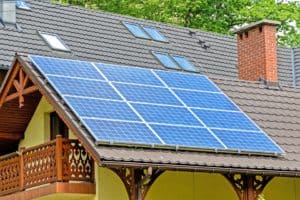Eco-friendly Home Remodeling and Building: Transforming Spaces With Green Energy
In today’s world, it’s more important than ever to consider the environmental impact of our choices, especially when it comes to home renovation or building.
Eco-friendly home remodeling is not only beneficial for the environment. It will also save you money in the long run.
By using eco-friendly items and materials, you’ll reduce energy consumption as well as pay less for utilities.
How to Make the Switch to Green Energy
The list below provides some practical tips on how to turn your spaces into energy-saving spots in your home.
These tips are particularly helpful if you’re seeking properties to remodel or you wish to buy land for sale in West Virginia so you can build a house.
Whether you choose to live off the grid or closer to a city, it helps to learn what you can do to control costs and become more energy efficient. Whether you’re making renovations or building a property, choosing eco-friendly installations is a smart move to make.
1. Choose sustainable materials
When planning an eco-friendly home remodeling project, choose materials that are sustainably sourced or recycled wherever possible.
For example, opt for reclaimed wood or bamboo flooring instead of traditional hardwoods.
Consider using recycled glass or ceramic tiles in your bathroom or kitchen, and select countertops made from eco-friendly materials like recycled paper or quartz.
2. Install energy-efficient windows
One of the primary ways homes lose energy is through drafts or heat transfer from windows. Upgrading your windows to double-pane or even triple-pane models can significantly improve insulation and reduce heat loss.
This translates into lower energy costs.
Be sure to choose window frames made out of sustainable materials like wood, aluminum, or vinyl.
3. Harness solar power
With advances in solar technology, solar-based products are now more accessible than ever. Installing solar panels reduces your reliance on fossil fuels as well as lowers your monthly electricity bill.
4. Use smart home technology
Smart home technology is a must-have installation in today’s eco-friendly home. By installing programmable thermostats and energy-saving lighting controls, you’ll only use heat, air conditioning, or lighting as needed.
Doing so will get rid of unnecessary waste and spending.
5. Insulate your home
Proper insulation is essential for maintaining a comfortable temperature inside your home year-round while conserving energy.
When remodeling, pay close attention to the type and quality of insulation you use, focusing on eco-friendly materials like cellulose or sheep’s wool, which is fireproof and also purifies the air.
6. Use water-saving fixtures
Reducing your water consumption is another important aspect of an eco-friendly home renovation or construction project.
Incorporate low-flow faucets, showerheads, and toilets in your bathroom designs to conserve both water and energy.
7. Select energy-efficient appliances
Energy-efficient appliances can significantly reduce your overall energy consumption. Choose Energy Star-rated products when buying new appliances for your kitchen, laundry room, and other parts of your home.
Why Making the Change to Eco-Friendly Installations is Worth It
Adopting an eco-friendly approach to a home remodeling or building project doesn’t have to be challenging.
By integrating green energy sources, sustainable materials, and energy-efficient technologies into your design, you can create a comfortable living space – one that lowers utility costs and reduces environmental waste.
Author bio-
Brandon Mickens works with LandHub. He has been involved with buying and selling land for the past 15 years and now wants to share his knowledge and experience with other
